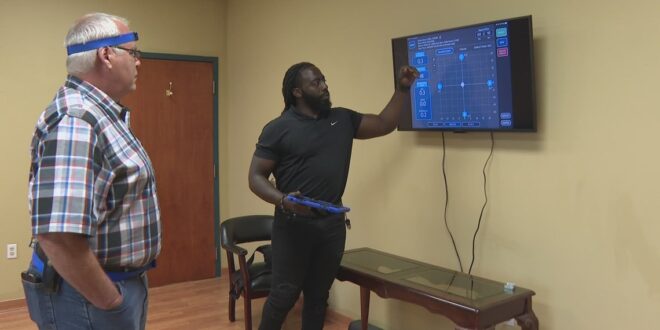Injured Patient Finds Recovery with Artificial Intelligence
ATLANTA — A patient whose injury prevented him from working is now recovering thanks to help from artificial intelligence.
And his doctor believes this technology could help other critically-injured patients improve mobility.
Robert Stahl said the fact that he’s able to walk is a miracle.
“I fell over a concrete barrier at work and hit the back of my head on the bottom of the concrete barrier next to it,” Stahl said. “Split the back of my head open. I had a severe concussion.”
A Promising Solution for Improved Mobility
When he first started therapy, as he tried to walk down the halls of Independent Neurodiagnostic Clinic in Atlanta, he described it as feeling like a pinball — bouncing into the walls.
“My balance, my vision was affected,” Stahl said. “My cognitive skills started declining rapidly.”
Stahl said BioMech’s AI technology helped him make a speedier recovery.
Dr. Larry Empting is his neurologist and the medical director of INC. He said it can even help Parkinson’s patients.
The Versatility of AI Technology
“We can use it in almost any area like in neurology, orthopedics, family medicine, this can help monitor for fall risks at home,” Dr. Empting said. “It can also help me on diagnostic aspects.”
Here’s how it works: wireless motion sensors capture and stream 3D motion and data and self-calibrate. A trainer can attach sensors and tell how balanced patients are in seconds.
Vice President of Sales at BioMech Jim Trovato says patients can monitor their progress in real-time.
“We can measure, really, any kind of motion,” Trovato said. “And it’s dealing with people that have mainly traumatic brain injuries or they were injured in some type of accident.”
Convenience and Affordability
Eventually, the technology will be available on cell phones so patients don’t even have to come into the office for results, which is important for patients with different abilities. Plus, Dr. Empting explained it won’t break the bank.
“Regular insurance does cover it,” Empting said. “The technology is not that expensive.”
Encouraging Others to Seek Help
For Stahl, it’s like a video game. As he heals, he should beat his high score. Stahl encourages others to get the same help because if you can see it, you can believe it.
“If you’re in physical therapy, you’ve got to sit there and you’ve got to try and explain to a physical therapist what you feel. And the physical therapist has to look at you and listen to you and try and interpret what you’re trying to tell them. A lot of that is extremely subjective,” Stahl added. “The sensors here, you can see on the screen. You can look at the numbers and you can see that you’re getting better.”
 Mind Uncharted Explore. Discover. Learn.
Mind Uncharted Explore. Discover. Learn.



